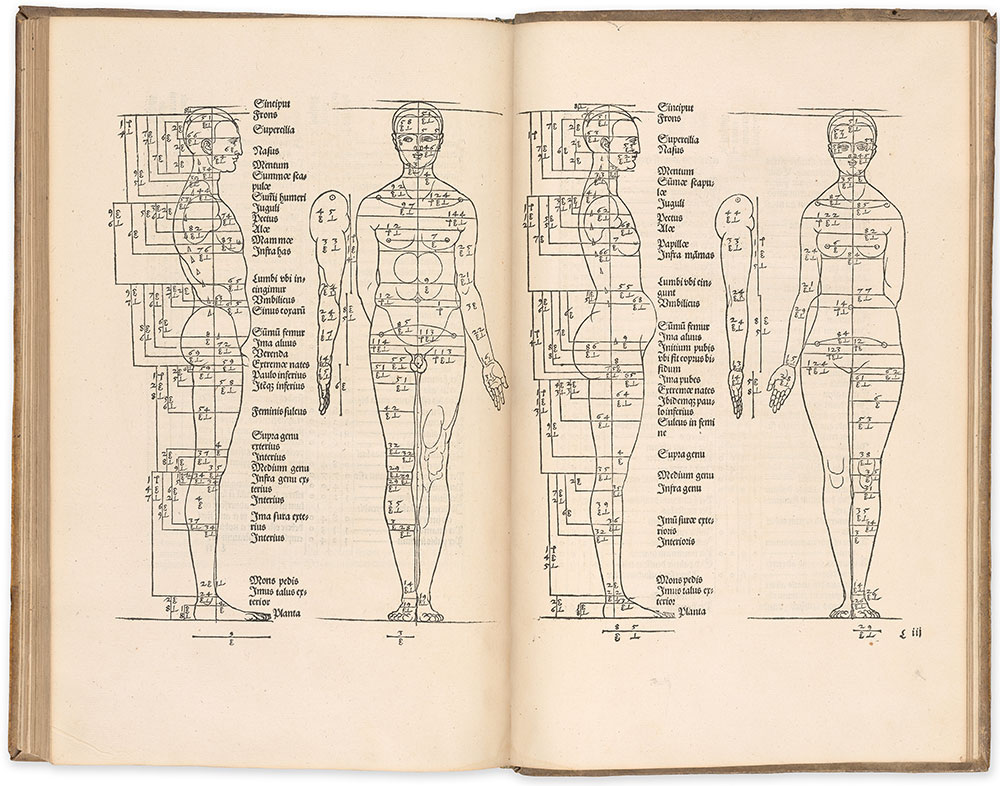
NUREMBERG: DÜRER AND HUMANISM
Dürer’s posthumous treatise on proportions codified his approach to the representation of the human body. With the volume’s roughly 150 woodcuts, including full-length studies of men and women in a variety of poses, the artist demonstrated his belief that the human body could be reduced to basic geometrical forms (lines, areas, and solids). Rather than following strict standards of idealized beauty, Dürer expanded his analysis to include various physiques of people of all sizes and ages, including children, at rest or in motion. Dürer first engaged with the topic of proportions following his travels to Italy, where artist-theorists such as Leon Battista Alberti and Leonardo da Vinci had worked extensively on the subject.
Albrecht Dürer (1471–1528)
De varietate figurarum (Four Books on Human Proportion), in Latin
Nuremberg: Agnes Dürer, 1532 and 1534
The Morgan Library & Museum, PML 77029
Gift of Mr. John P. Morgan II in memory
